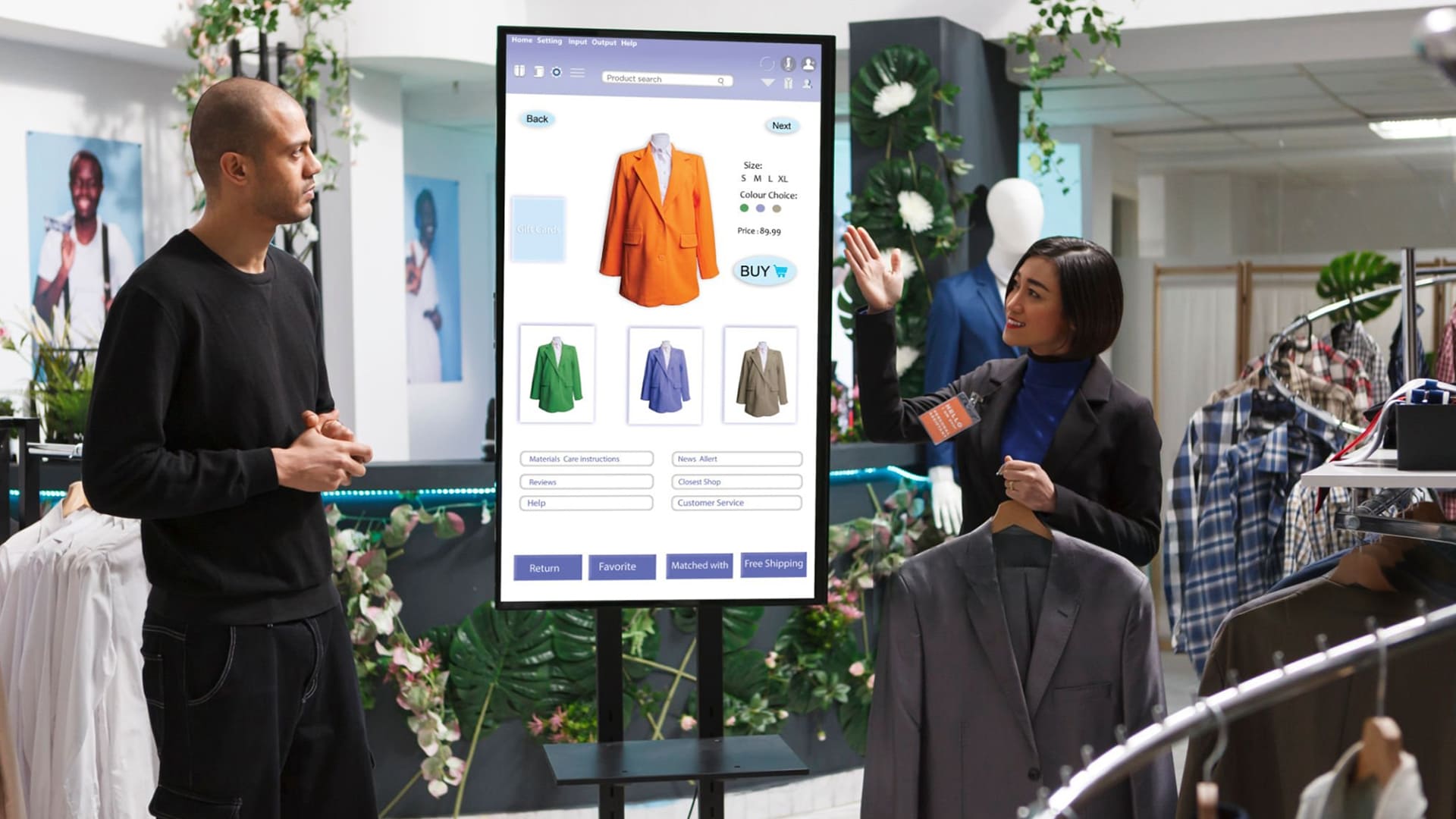How AV and data technologies are reshaping retail performance and customer experiences.
Every decision must be swift, and every operation must be streamlined; this is the mantra of a successful business. In alignment with this mantra, operational efficiency and data-driven decision-making have become fundamental pillars for retailers striving to stay ahead. As customer expectations continue to evolve and market pressures intensify, the role of intelligent technology, particularly in the form of advanced AV systems, has expanded well beyond backend automation or basic in-store displays. The retail sector is entering a new era where the integration of AV technology with real-time data is transforming both internal workflows and the overall customer journey.
The new face of operational efficiency in retail
Traditionally, retailers focused on physical infrastructure, inventory systems, and sales tracking as the backbone of operational excellence. However, modern efficiency is defined by speed, personalization, responsiveness, and seamless integration between digital and physical shopping experiences. AV technology is increasingly central to achieving this new type of operational agility.
High-resolution digital displays are no longer static promotional tools; they are now dynamic communication assets capable of real-time updates. Retailers use these displays to guide foot traffic, automatically adjust pricing, deliver targeted offers, and assist with queue management during busy hours.
Interactive kiosks empower customers to search for product details independently, place orders, or provide feedback. These actions not only speed up service but also reduce the need for manual staffing. Moreover, these systems often integrate with backend databases, maintaining accuracy and consistency in real-time.
Camera-enabled AV systems are now employed for shelf monitoring. Instead of relying on periodic manual checks, these systems can instantly detect low stock or disorganized shelves, alerting staff accordingly. This enhances inventory visibility, reduces the chances of missed sales, and ensures that popular products remain available to customers.
The rise of data-driven decisions
While AV technology enhances task performance, data-driven decision-making introduces a new dimension by helping retailers understand why certain strategies succeed or fail. The true power lies in how AV tools and smart analytics collaborate.
Video analytics now provide retailers with insight into customer movement patterns, product interaction points, and demographic profiles. This data can be visualized as heatmaps to highlight areas that attract the most attention, resulting in more effective product placement and store layout design.
Beyond physical movement, AI-based AV systems can evaluate customer sentiment by analyzing facial expressions and engagement levels. A promotional screen might detect how long someone watches an ad or whether they smile, frown, or remain indifferent, and adjust its messaging in real time. These behavioural insights offer store managers a much clearer picture of what resonates with shoppers.
AI-powered systems that monitor real-time inventory levels and integrate with point-of-sale transactions can assist retailers in predicting which items are likely to run out or which products are trending upward. Accurate forecasting not only minimizes losses from overstock or unsold items but also improves customer satisfaction by ensuring timely product availability.
With digital signage now able to capture engagement metrics, retailers can assess how effective a promotional message is based on customer interaction. This feedback loop enables brands to experiment, compare versions, and optimize campaigns based on real-time data rather than guesswork.
Real-world applications: AV meets data in retail
These technological advancements are not just theoretical. Globally and in India, forward-looking retailers are already reaping the benefits.
Leading retail chains are investing in facial recognition and AI-powered surveillance not only to improve security but also to analyze visitor demographics and tailor store experiences accordingly. In high-end lifestyle and sportswear stores, large-scale video walls, RFID-enabled fitting rooms, and immersive AV environments are creating personalized and engaging journeys for shoppers.
At the same time, major players in the mid-range segment are adopting digital pricing systems, automated checkout stations, and kiosk-based assistance to enhance efficiency and gather valuable behavioural data.
Unified retail experiences through AV and data
This merging of physical and digital touchpoints brings us to the growing importance of creating unified or omnichannel retail experiences. Today’s shoppers expect consistency, whether they are browsing online, using a mobile app, or walking into a brick-and-mortar outlet. AV solutions have become instrumental in connecting these channels.
A digital signage screen in-store might display QR codes that lead to personalized online offers. Smart mirrors can help customers visualize outfits and then prompt them with similar suggestions through the retailer’s app. Even customer support is evolving, as touchscreen terminals in stores now enable real-time conversations with remote service agents, reducing wait times and expanding support capabilities without crowding physical space.
The rich data collected through all these channels, visual analytics, interaction logs, sales conversions, and sentiment analysis can be centralized and analysed for deeper customer insights. Retailers can use this intelligence to tailor recommendations, predict trends, and build long-term loyalty through relevant, responsive service.
Challenges in implementation
Despite the clear benefits, transitioning to AV-driven and data-enabled retail operations comes with challenges.
The cost of implementing AV infrastructure can be high, particularly for smaller retailers who may struggle to justify the upfront investment. This makes scalable and modular systems increasingly appealing, enabling businesses to start small and expand as the value becomes apparent.
Data privacy is another concern. As retailers gather more behavioral and biometric information, they must ensure ethical use and compliance with data protection laws, such as India’s Digital Personal Data Protection (DPDP) Act or the European Union’s General Data Protection Regulation (GDPR). Transparent communication with customers and secure data handling practices are essential.
Integration challenges also arise when connecting legacy systems with modern AV platforms and cloud-based analytics tools. Many traditional POS and ERP systems were not designed with interoperability in mind, so solutions must include middleware, APIs, or even system overhauls to ensure seamless functionality.
Ultimately, the human element is vital. Employees must be trained not only to operate new technologies but also to interpret data insights and apply them to everyday decisions. Without buy-in from the staff, even the most advanced technologies can fall short of their potential.
The role of AV integrators and tech consultants
This is where AV integrators and consultants come in. Their role goes beyond installation and technical support. They work closely with retailers to understand business objectives, tailor AV strategies accordingly, and ensure alignment with broader digital transformation goals.
Increasingly, these integrators are offering AV-as-a-Service models that minimize capital investment and provide ongoing updates, making it easier for retailers to adapt without large upfront costs.
Future outlook: Predictive retail powered by AV and AI
Looking ahead, the fusion of AV, AI, and data science is set to create a new kind of retail: one that is predictive, adaptive, and deeply customer-centric.
Stores may soon adjust lighting, music, and messaging automatically based on who walks in. Promotions may shift dynamically based on real-time trends or even emotional cues captured through visual analytics. As machine learning becomes more sophisticated and devices become more connected, the boundaries between technology and human experience will continue to blur, to the benefit of both retailers and consumers.
Final thoughts
The future of retail lies in how effectively businesses can marry operational precision with intelligent decision-making. AV systems and data analytics are no longer nice-to-have technologies; they are the strategic levers that will define who leads and who lags. Retailers who act now with thoughtful implementation, trusted technology partners, and a clear focus on customer value will be better positioned to adapt, compete, and thrive in the years ahead.




